Square-Enix sings it and plays it one more time: Find out in our review if Theatrhythm Final Bar Line rots or rots
In the title of our review you may have noticed a detail: given the trial version to which we have dedicated a preview, what is this step due to? PS4 format to judge Theatrhythm Final Bar Line? The real question is, what does that entail? How much does the reference console affect when a title is cross-platform? In this case, the different context translates into different judgment parameters, which however we will not talk about before the final stages. For now, the comparisons to be made are quite different, and they have to do with the background of the publisher and the development team.
Already in our previous Kingdom Hearts: Melody of Memory poll, just over two years ago, we mentioned the two musical collaborations between the RPG giant Square-Enix and the boys of indieszero. The first Theatrhythm Final Fantasy and its sequel Curtain Call on Nintendo 3DS boasted some youthful mistakes; from title to title, though, over the years the development team has figured out how to balance the celebratory aspect and an intriguing gameplay formula on its own merits. With these premises, we are automatically faced with the best exponent, right? We will see.
Canovaccio – Review Theatrhythm Final Bar Line (PS4)
The plot of Theatrhythm Final Bar Line, as was the case in previous games with the exception of Melody of Memory, is practically non-existent, but this does not prevent us from opening the review with a small reminder. The transition to a super deformed artistic style (born, for the more attentive among you, in the management of the avatars of Kingdom Hearts re:coded) does not deny that the presence of the goddess of order Cosmos and the god of discord Chaos inserts everything in the narrative semi-canon of Dissidia Final Fantasy and its sequel Duodecim, both on PSP. What we saw in the 2016 arcade sequel, which arrived on PS4 with the subtitle NT, consists of a reboot with different gods.
And given the theatrical theme that permeates the entire series of musical games, we could only talk about canvas. The various “series missions” offer the most iconic pieces of each title (except omissions depending on the version in your possession, which range from passable to sensational), in such a way as to summarize the various games in the main numbered series in a few iconic stops . It’s not so much about detailed synopses (for those there was Record Keeper on mobile phones, ironically represented here too; the characters just quote their lines without any context), but about a generic “feel” for each title. An example is the theme of Aerith, used to accompany a fight: who knows, knows. The game aims at the hearts of existing fansand not really to create new ones, after all.
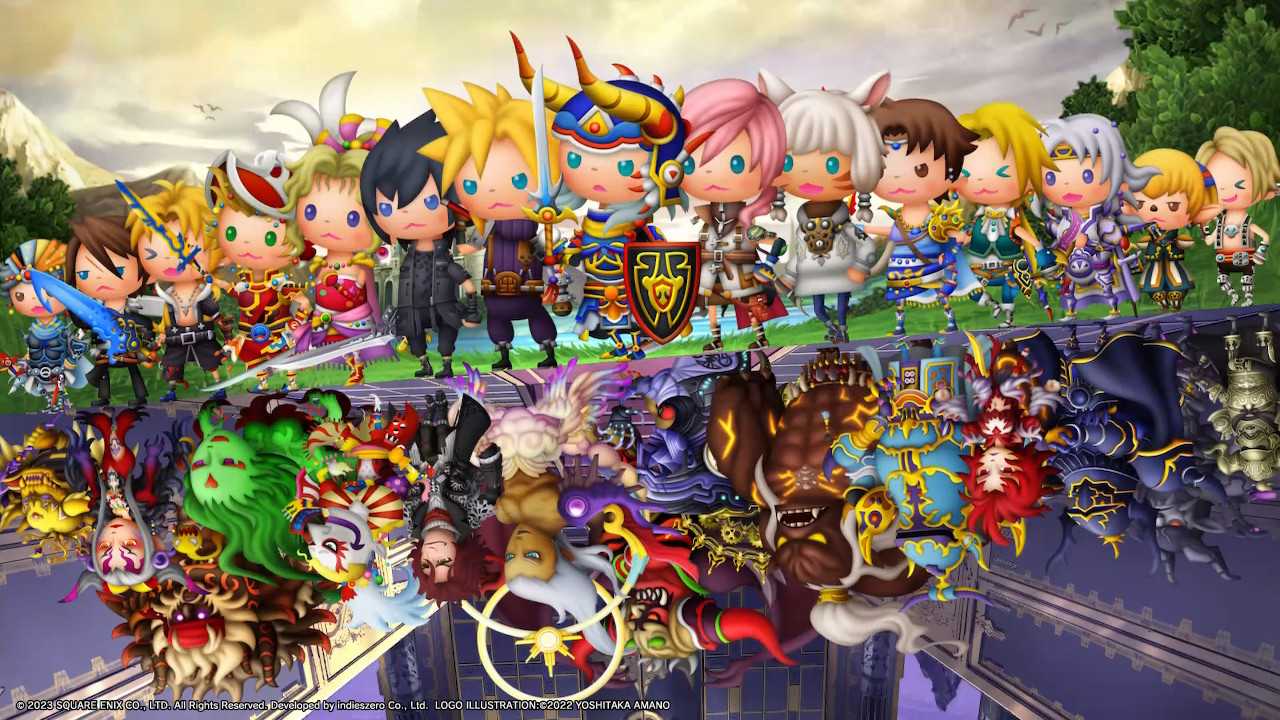
Trauma Free Trigger – Theatrythm Final Bar Line Review (PS4)
Let’s talk briefly about gameplay general of the game, regardless of the modes. Depending on the type of track, our heroes will have one or four circles to keep an eye on. As it progresses, the song will send us “triggers” to hit to the rhythm of the music. The simplest type is i Touch Trigger, with which you just need to press any of the front keys (△, □, ○, ✘ or, if you use the most suitable console for the game, X, Y, A and B). In some cases they can then come the Hold Trigger (with which to hold down the button and possibly use the analog stick) and fearsome Slide Trigger (requiring a flick of the levers in a specific direction) if you are not playing in easy mode.
The transition from the touch screen to the buttons wasn’t exactly painless, but in that sense it’s a great good that from Melody of Memory there are so many equivalent alternatives for Touch Trigger input. Thankfully the “Chaos tracks” from the progenitor of the series are just a distant memory, although the game has introduced a fourth level of difficulty (“Supremo”) suitable only for true veterans of the genre. If we have to say anything positive about the PS4 version, it is that compared to its Nintendo Switch counterpart the game benefits from symmetrical analog levers of the controller.

Bene, brani, bis – Review Theatrhythm Final Bar Line (PS4)
The two main types of songs you’ll come across reenact (under the same cube root that Melody of Memory has tried to avoid) combat and exploration of the overworld. The first of the two responds to the name of BMS, and consists of a clash between our team and the monsters that will continue to appear to the bitter end. Life points are shared between the four, while trails to follow are not. The rhythm circle is only one with category levels FMSin which, however, the Hold Triggers often require a movement as decisive as it is precise of the analog lever.
Completing one of the “worlds” (read: one of the numbered Final Fantasy contained in the game) unlocks a special song, in the category EMS. In a similar way again to what was seen in Melody of Memory, we will have to hit the notes in rhythm following a song already covered in a level of another type while in the background it is possible to admire (without getting distracted, however) a representative video of the game of origin. With the four circles positioned at the bottom, the latter category makes the tired and hackneyed comparisons with Guitar Hero officially inevitable. We’d be lying, though, if we said things hadn’t improved on previous Theatrhythms.

Story Mode – Theatrhyrhm Final Bar Line Review (PS4)
We’d really like to talk about Series missions like the game’s story mode proper, but really they’re only the closest to it. In the first game sessions, the first unlockable titles are literally the same as in the demo: this is because the difficulty, depending on the game in question, can skyrocket. Fortunately, the linearity of the songs (with unnecessary “crossroads” attached) plays in favor of a much less repetitive release of the contents of the chapters on 3DS, even counting the improvements of Curtain Call with its Quest Medleys (we appreciated the bestiary before each song, as a preview of the enemies that can be found).
Exclusive to the Quest Series we have, well, the missions themselves. In fact, each song has objectives, by satisfying the requirements of which it is possible to obtain exclusive rewards without having to submit to the cumulative score mayhem tree Rhythmia. By opening each new episode, the playable characters are also unlocked, with exceptions: an incentive like any other to experiment properly with team building. Some aspects affect the gameplay more (invocations and skills in the first place), others don’t (companies like the Moogles and the Airships are a mere embellishment to the gaming experience).
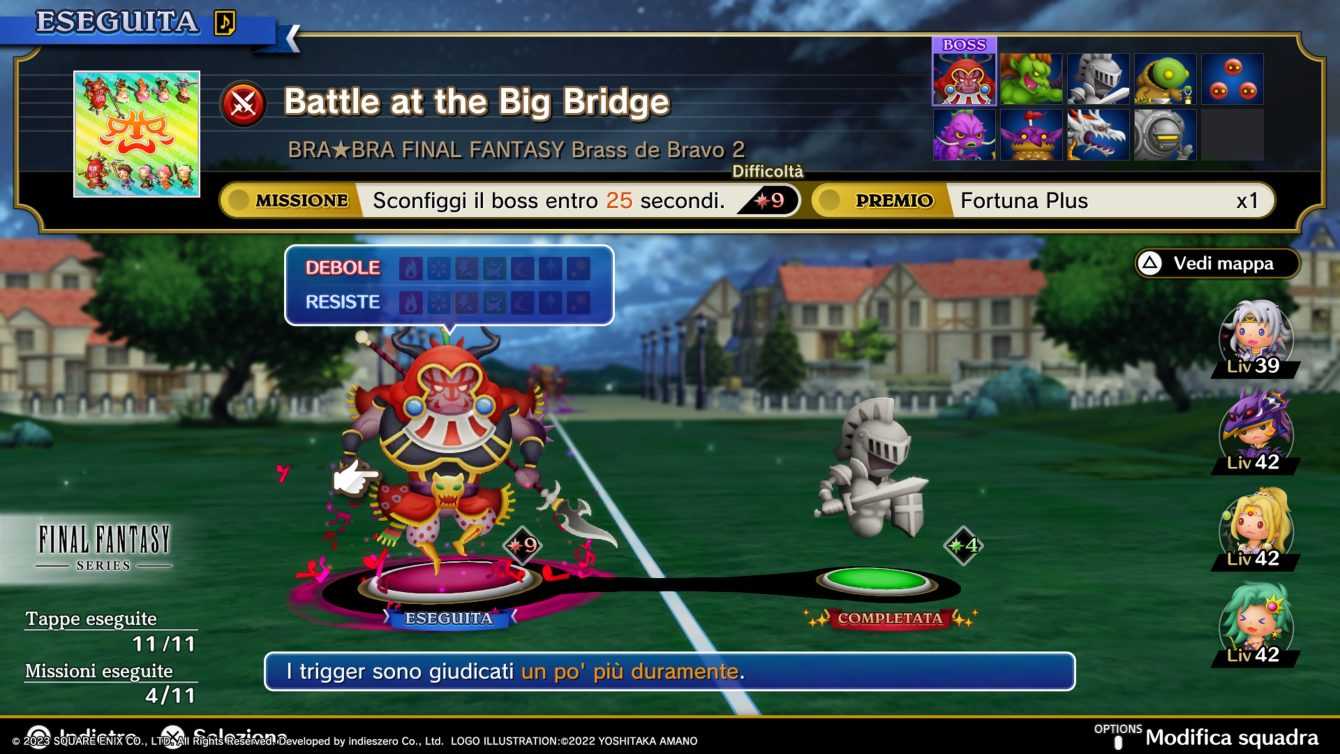
“Long live freedom, long live (Long live!) freedom” – Review Theatrhythm Final Bar Line (PS4)
The mode Musical Stages corresponds to the free game with which you will hunt for the record (and EMS songs, if you like) once you have done the little homework of the Series Missions. Leaving aside the mechanics of “Today’s hit!” also seen in Melody of Memory (called there “Song of the day”) with which to scrape together more Rhythmia, this is also where the additional content finds its place. So let’s talk about the DLC songs and the DX songs, between which there is an unfortunate difference that we will go into more detail in a few paragraphs. Either way, this is the right way to experiment with inputs.
In fact, there are three different ways to test your reflexes and your sense of rhythm (why choose this title, otherwise?). In reality, the selection is also available with the Series Missions, but mind you: the scores that can be obtained are different for each style of input, so don’t hope to take advantage of the concessions and then bully yourself for some records. Beyond Standardthe main input type, then also takes over Simplewhich removes the Slide Triggers (pace your analog sticks) and, finally, In pairs. Melody of Memory’s co-op separated itself from the rest of the game by dedicating few songs to players teaming up, so we appreciate the upgrade (screenshot below from the Switch demo).
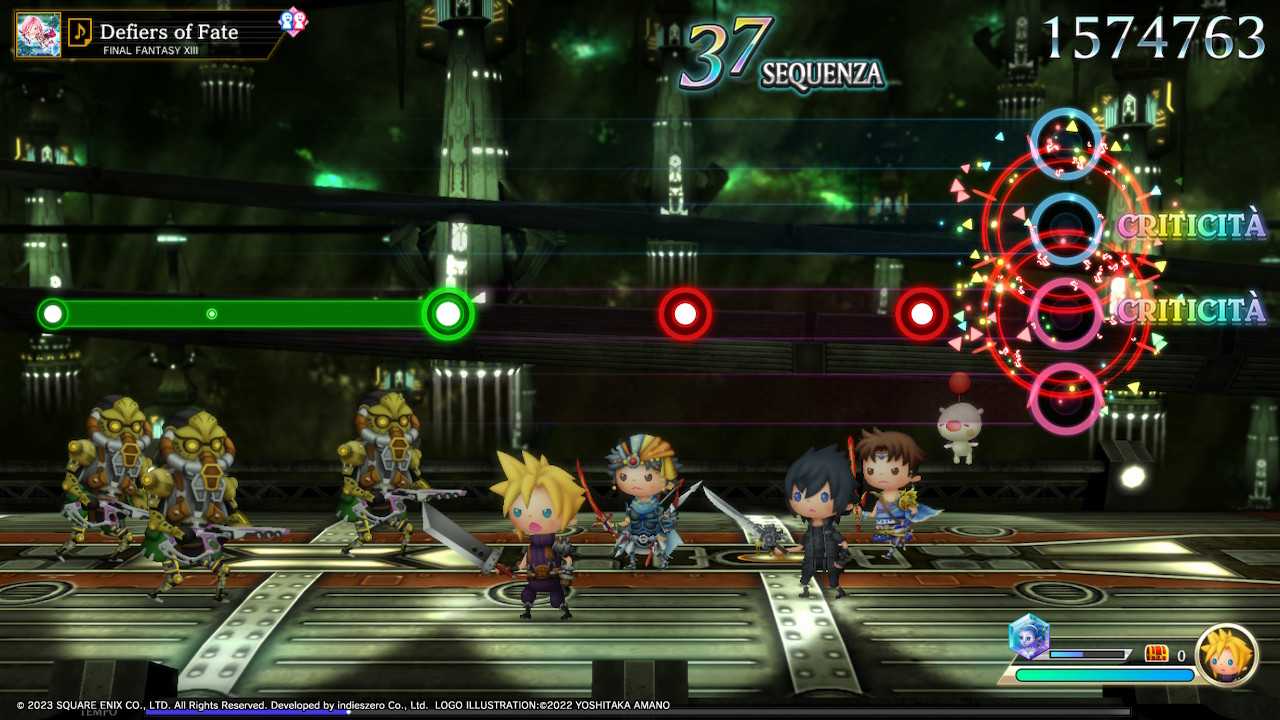
Colosseo Plus – Review Theatrhythm Final Bar Line (PS4)
The multiplayer component, beyond the collaboration, is also present here under the heading Multi-Battle. Those who have played the predecessors on 3DS already know what to expect: the title, in this sense, has no intention of reinventing the wheel. In fact, ringing the various ritual combos allows you to send disturbing elements to the unfortunate opponents, which vary from the visibility of the notes to the timing with which the triggers approach the rings. As always, everything requires a subscription to the reference online service, whether it’s PlayStation Plus (PS4) or Nintendo Switch Online (Nintendo Switch).
The social component, then, can be found in the exchange of emails ProfiCard. After their debut on 3DS, highly customizable tiles make a comeback here too. After an online battle between a Burst and another, you can exchange your ProfiCards to let other players participate in your personal bests. The most important aspect of the thing (despite the fairly easy unlocking of the objects concerned) is the possibility of attaching a particular Invocagemma to one’s cards, in such a way as to facilitate its obtaining also for the other players with whom we have come into contact .
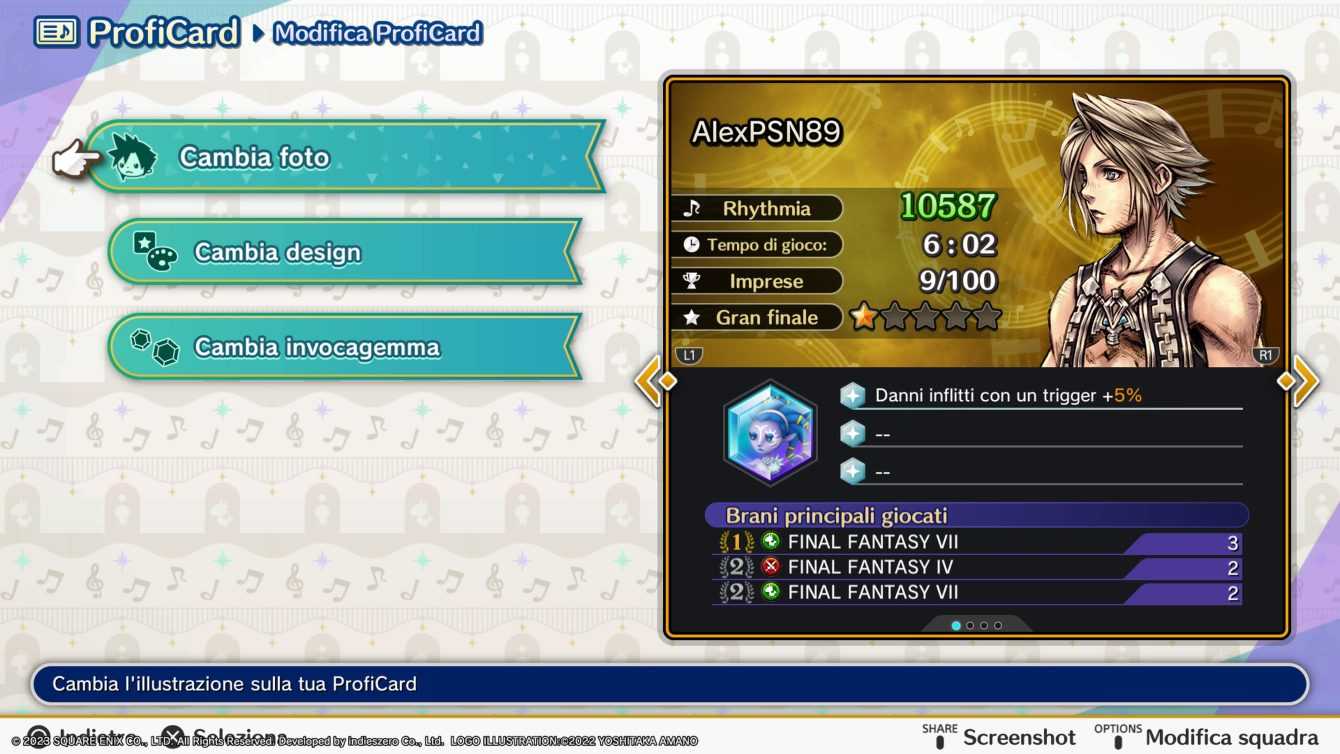
Take Me Away Gallery – Theatrhythm Final Bar Line (PS4) Review
And if you are in the mood for collecting, we have good news for you. The Museo goes hand in hand with the unlocking criteria, now aligned with the more lenient standards set by Melody of Memory. For the uninitiated, the predecessors on 3DS strictly imposed a disproportionate grind: repeat the songs ad nauseam to accumulate Rhythmia, and then unlock fragments with which to get closer to unlocking a playable character (one!) or obtain free playback of the songs in the music player. Thankfully, Rhythmia-related rewards are now occasional; the rest is easy to get.
Unfortunately the CollectaCards, exactly as happened with the images of the characters in Melody of Memory (and, if you think about it, also with the Spirits of Super Smash Bros. Ultimate) have lost their encyclopedic descriptions in the transition to the fixed console. A double sin, considering this is the first Theatrhythm localized in Italian. However, the pleasant aspect lies in the Music Player and in the Theater with which to play songs and movies respectively. The grinding here is justified for a more suitable amount of content, rather than acting as a gimmick to lengthen the broth.

Grieving (and Deluxe) Notes – Theatrhythm Final Bar Line Review (PS4)
Believe us: we have postponed the complaints as much as possible, but the tongue beats where the tooth hurts. As you know, there are three editions for the game. How much does it have to offerstandard edition and 60 euro it gives us very little to complain about: 385 tracks. For those who want even more content, it is possible…






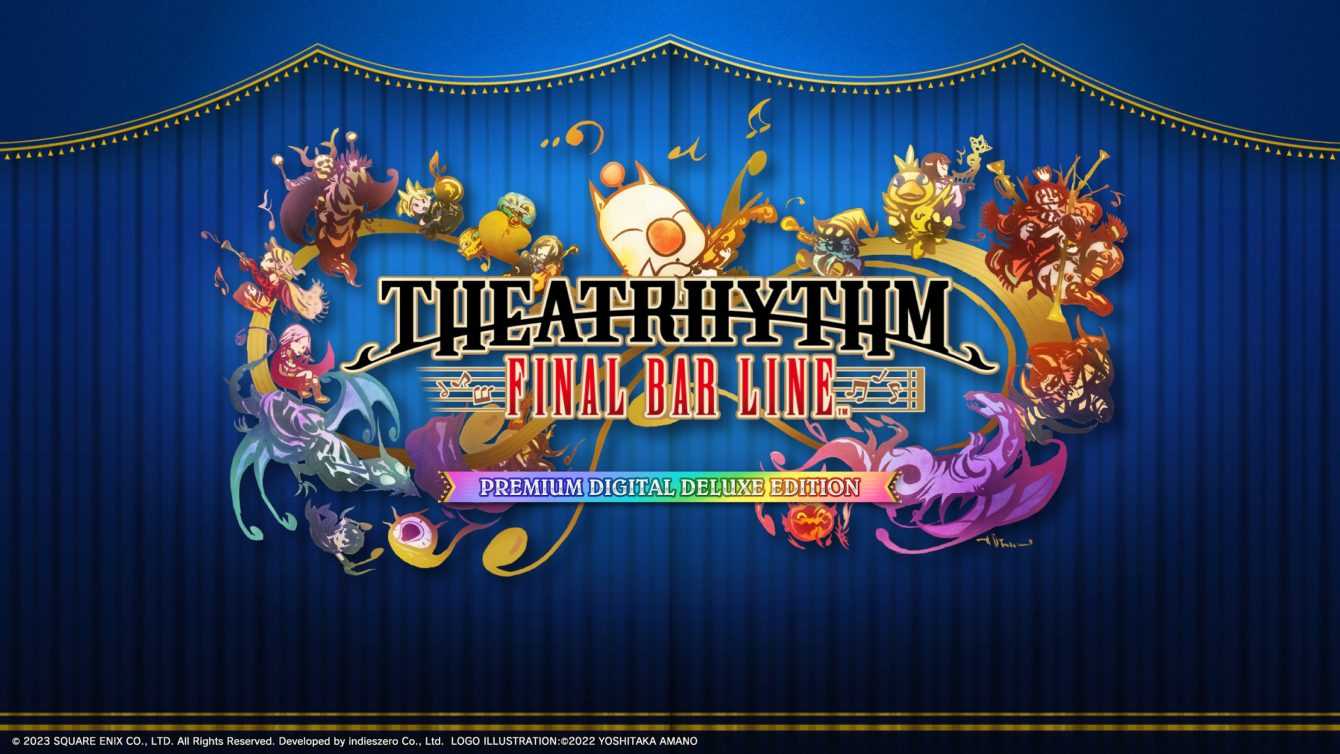





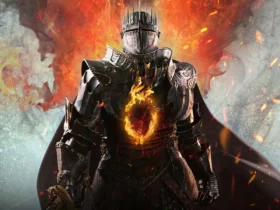

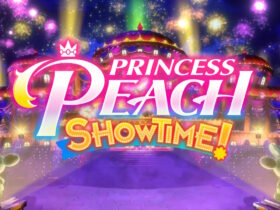
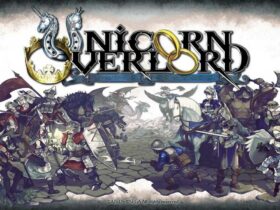
Leave a Reply
View Comments